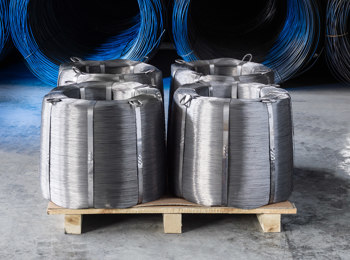დეკ . 16, 2024 11:19 Back to list
Specifications for Factory-Made Gabion Retaining Walls for Optimal Performance and Durability
Gabion Retaining Wall Specifications A Comprehensive Guide
Gabion retaining walls have gained popularity in various civil engineering applications due to their durability, aesthetic appeal, and effective erosion control. These structures, made of wire mesh and filled with rocks or other materials, provide solutions for slope stabilization, earth retention, and landscaping. Understanding the specifications associated with gabion retaining walls is essential for successful design and implementation. This article outlines key factors to consider when planning a gabion retaining wall project.
Material Specifications
1. Wire Mesh The wire used for the gabion boxes should be of high quality to ensure strength and longevity. Typically, galvanized steel wire is preferred due to its corrosion resistance. The wire should have a minimum diameter of 2.4 mm (12 gauge) to ensure adequate tensile strength. Additionally, PVC-coated wire can be an option for enhanced protection against environmental factors.
2. Stone Fill The stones used in the gabions should be durable, angular, and free from any decomposable materials. Common choices include granite and limestone, with a size range of 100 mm to 300 mm to prevent voids and enhance stability. The weight of the fill is crucial, as heavier materials increase the wall's resistance to lateral forces.
3. Geotextiles In some cases, geotextiles are used behind or within gabion walls to improve drainage and prevent soil erosion. These fabrics help filter water while supporting soil retention, which is vital in maintaining the integrity of the wall structure.
Structural Design
1. Wall Height and Slope The height of a gabion retaining wall typically ranges from 1 to 5 meters, depending on site conditions and design requirements. Walls exceeding 2 meters in height may require additional engineering considerations such as tiered designs or stepped configurations to ensure stability.
2. Foundation Requirements A stable foundation is crucial for any retaining wall. Gabion walls should be built on compacted soils or a gravel base that can support the weight of the wall and the fill. The foundation should extend beyond the base of the wall to distribute loads effectively and prevent settlement.
gabion retaining wall specifications factory

3. Drainage Provisions Proper drainage is integral to the performance of gabion walls. As water accumulates behind the wall, hydrostatic pressure can lead to failure. Features such as weep holes or perforated drainage pipes can be incorporated to manage water flow and reduce pressure buildup.
Installation Guidelines
1. Site Preparation Before construction, the site must be thoroughly assessed and prepared. This includes clearing vegetation, removing debris, and leveling the ground where the wall will be constructed. The alignment of the wall should be marked to ensure accurate placement.
2. Gabion Assembly Gabion boxes are typically supplied flat and require assembly on-site. It’s essential to securely tie the corners and edges with wire to bolster strength. The filled gabions should be stacked carefully, ensuring that the larger stones are placed at the bottom for stability.
3. Backfilling and Compaction After the gabions are assembled and filled, the area behind the wall should be backfilled with soil to create a stable environment. Proper compaction of the backfill material is critical to prevent settlements and ensure the effectiveness of the retaining structure.
Maintenance Considerations
Gabion retaining walls require minimal maintenance, but regular inspections are advisable to identify any potential issues such as erosion or displacement of the stone fill. If vegetation begins to grow on or near the wall, it should be managed to avoid compromising the structure.
Conclusion
Gabion retaining walls are a versatile and effective solution for various engineering challenges related to soil retention and erosion control. By adhering to specific material and structural specifications, engineers and builders can ensure the longevity and effectiveness of these structures. Through careful planning, installation, and maintenance, gabion retaining walls can provide not only functional benefits but also enhance the natural beauty of any landscape. As trends in sustainable construction continue to evolve, gabion walls are likely to remain a favored choice in both commercial and residential projects.
-
HESCO Gabion Baskets for Coastal Erosion Prevention
NewsAug.22,2025
-
Longevity and Durability of River Rock Gabion Walls
NewsAug.22,2025
-
How to Integrate Gabion 3D Walls in Urban Planning
NewsAug.22,2025
-
Reno Mattress Gabion Applications in Civil Engineering
NewsAug.22,2025
-
How to Install Wire Mesh for Gabion Baskets Properly
NewsAug.22,2025
-
Best Materials for Filling a Chain Link Gabion
NewsAug.22,2025
-
Wire Mesh Thickness Impact on Gabion Wall Load Bearing
NewsAug.12,2025






